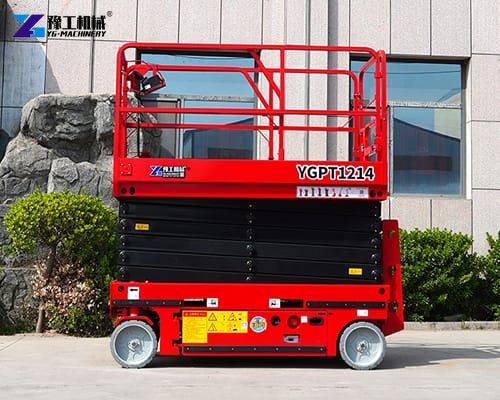Scissor lift with extendable platform is a type of mobile elevated work platform, characterized by its crisscrossed metal braces that extend vertically to raise the platform. An extendable platform enhances this design by allowing the work surface to telescope outward, increasing its reach without compromising stability. This dual functionality—vertical elevation and horizontal extension—makes scissor lifts with extendable platforms ideal for tasks requiring precise positioning in tight or expansive spaces.
Advantages of Using a Scissor Lift With Extendable Platform
- Increased Productivity:
The ability to extend the platform horizontally reduces the need to reposition the lift, saving time and labor. Workers can cover larger areas from a single setup. - Enhanced Safety:
Operators maintain a stable base while working at heights, minimizing risks associated with ladders or scaffolding. Safety rails and harness points further protect against falls. - Space Efficiency:
Compact designs allow operation in narrow aisles or congested worksites. The extendable platform eliminates the need for additional equipment to achieve horizontal reach. - Cost-Effectiveness:
By combining vertical and horizontal movement, businesses reduce equipment rental costs and downtime. Fewer machines are needed to complete complex tasks. - Adaptability:
Customizable platforms accommodate varying load capacities, sizes, and attachment options (e.g., tool trays, and material holders).
Scissor Lift with Extendable Platform Applicable Industries
- Warehousing/Logistics:
Inventory management in high-bay storage areas.
Maintenance of lighting, sprinklers, or conveyor systems. - Aviation:
Servicing aircraft engines, wings, or fuselages in hangars.
Loading/unloading cargo from cargo holds. - Events/Entertainment:
Setting up stage lighting, sound systems, or video screens in arenas.
Rigging for concerts, theaters, or trade shows. - Facilities Management:
Painting, cleaning, or repairing ceilings and walls in commercial buildings.
Components and Working Mechanism
- Scissor Mechanism:
The core of the lift consists of linked, folding steel supports arranged in an X-shaped pattern. Hydraulic cylinders or electric actuators expand these supports vertically, raising the platform. - Extendable Platform:
Mounted atop the scissor mechanism, the platform features sliding sections that extend horizontally. Operators control the extension via a panel, often synchronized with the lift’s elevation controls. - Power Source:
Depending on the model, scissor lift with extendable platform may use electric batteries, diesel engines, or hybrid systems. Electric models are preferred for indoor use due to zero emissions, while diesel variants suit outdoor rugged environments. - Safety Features:
Modern units include tilt sensors, emergency stop buttons, guardrails, and overload protection. The extendable platform often has anti-slip surfaces and safety locks to prevent unintended movement.
Safety Protocols and Best Practices
While scissor lifts with extendable platforms are designed for safety, adherence to protocols is critical:
- Training: Ensure operators are certified and familiar with the equipment’s controls and limitations.
- Pre-Use Inspections: Check hydraulic lines, platform locks, and emergency systems before each shift.
- Load Management: Never exceed the platform’s weight limit, and distribute loads evenly.
- Environmental Awareness: Avoid uneven terrain, overhead obstacles, or high winds when operating outdoors.
- Fall Protection: Use harnesses and lanyards even if guardrails are present.
Maintenance Tips for Longevity
Regular maintenance ensures optimal performance and extends the equipment’s lifespan:
- Lubrication: Keep scissor arms and extension rails well-lubricated to prevent wear.
- Battery Care: For electric models, follow charging guidelines to avoid battery degradation.
- Hydraulic System Checks: Monitor fluid levels and inspect for leaks. Replace filters as recommended.
- Structural Integrity: Periodically inspect welds, bolts, and platform surfaces for damage.
- Software Updates: Modern lifts with electronic controls may require firmware updates for safety enhancements.


